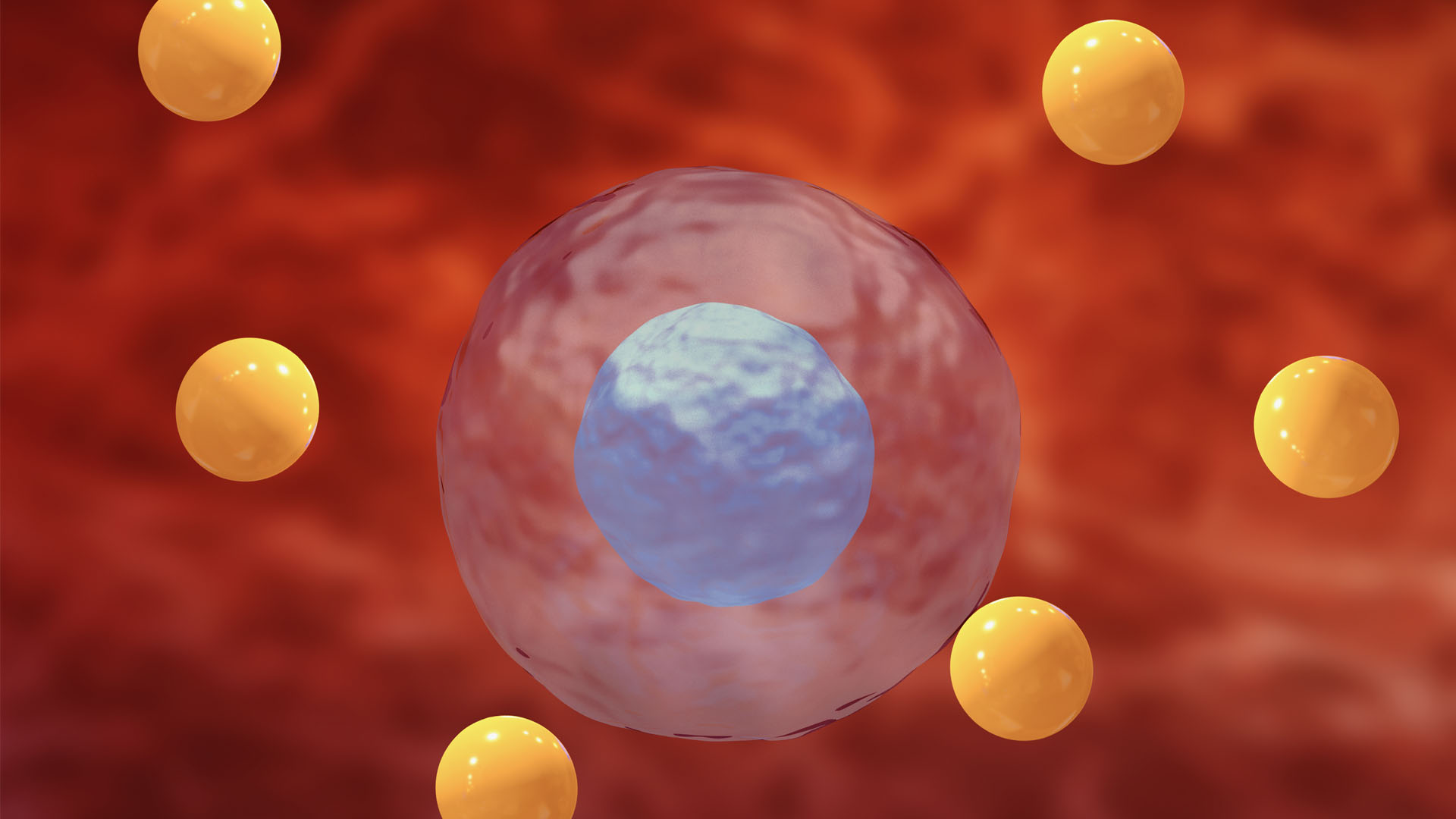What is oxidative stress?
Oxidative stress occurs when there is an imbalance between the production of free radicals and the body’s ability to counteract them.

Oxidative stress describes an imbalance between cells' production and elimination of byproducts of the breakdown of oxygen. These byproducts, known as reactive oxygen species (ROSs), are important for cell functioning but cause damage in high amounts. ROS belong to a larger category of highly reactive chemicals called free radicals. Because cells need ROSs to function, some researchers have described oxidative stress as a good thing in some contexts. Others say that oxidative stress, by definition, is bad.
Oxidative damage is involved in aging and in several diseases. Chemicals that inhibit oxidation and the production of ROSs are called antioxidants. Some research suggests antioxidants could help limit oxidative damage. However, it's unclear how much or to what effect.
What causes oxidative stress?
ROSs are produced naturally when the body breaks down diatomic oxygen (O2) as part of cellular respiration, the process of extracting energy from glucose (sugar). In organisms that have one, this happens in the mitochondria, the so-called powerhouse of the cell. As part of the last stage of cellular respiration, the cell separates electrons, or negative subatomic particles, from byproducts of glucose. This enables the cell to make a molecule called adenosine triphosphate (ATP), its main power source. The cell needs oxygen to accept the electrons at the end of this process, and most oxygen molecules are finally transformed into water.
However, some oxygen molecules receive fewer electrons and are instead transformed into free radicals, specifically ROSs. These substances' missing electrons are what make them extremely reactive, and they will react with many substances in the cell to gain electrons and become more chemically stable. Some common ROSs are peroxides (such as hydrogen peroxide), superoxide and the hydroxyl radical.
"We constantly make those reactive oxygen species, as we call it, in every cell of the body," Ursula Jakob, a professor of molecular, cellular and developmental biology at the University of Michigan, told Live Science. In addition to being a byproduct of respiration, ROSs are used in cell signaling, or sending messages within or across cells.

Ursula Jakob studies the role of oxidative stress on host defense and aging. Her research funded by the NIH has made strides in understanding exactly how the physiological oxidant bleach kills bacteria, and how bacteria’s own defenses can protect against the cellular stress caused by bleach. She received her PhD in 1995 from Regensburg University.
Immune responses, exposure to radiation, and other cellular responses to pollutants or toxic substances can also generate ROSs.
However, production of ROSs doesn't cause damage on its own, as cells need some ROSs to function. Cells use antioxidants to get rid of excess ROSs, limiting potential damage. When the amount of ROSs overwhelms the cell’s antioxidant system, ROSs accumulate, creating oxidative stress, said Jakob. That could be because of increased ROS production or decreased elimination from the cell.
What are the effects of oxidative stress?
Normally, cells use ROSs as part of their signaling processes — sending messages to other parts of a cell or to other cells. However, excess ROSs cause oxidative damage, which is oxidation of parts of the cell. Just as the oxidation of iron forms rust, this process can transform and damage the molecules that make up cells, which includes mutations in DNA and RNA, misfolded proteins, and other types of damage to sugars and lipids.
Cells can repair some amount of damage, but if it is too extensive it can trigger apoptosis (programmed cell death), a sort of self-destruct mechanism. In severe cases, it can also cause necrosis, which is when cells become so damaged that they are prematurely destroyed, leading to tissue death.
Research suggests that oxidative stress plays a role in many conditions. Some of the most well-established of these are type 2 diabetes, cancer, and hardening of the arteries, or atherosclerosis.

Oxidative stress has also been associated with several different neurodegenerative diseases, including Alzheimer's disease, Parkinson's disease, amyotrophic lateral sclerosis (ALS), and multiple sclerosis (MS). This relationship was first observed in the late 1980s, according to a 2004 article published in Nature Reviews Drug Discovery, with mounting evidence that oxidative stress plays a role in neurodegenerative disease since then. A 2016 article published in Experimental Neurology reviewed evidence of oxidative stress’s role in MS from as early as 1987.
"The neurons that are at risk during [Alzheimer's Disease], they're profoundly affected by every known type of oxidative damage," said George Perry, a professor of neurobiology at the University of Texas. In Alzheimer's and some Parkinson's patients, Perry told Live Science, signs of oxidative damage show up in the cytoplasm, or main body, of some neurons, which are full of "mitochondrial garbage" — enzymes, along with molecules of copper and iron, that are usually found only in the mitochondria.
Oxidative damage is clearly a part of Alzheimer's. However, researchers haven't been able to pinpoint exactly how and to what extent oxidative stress throughout a person's life contributes to the disease. It's also hard to say if it causes aging — an idea that has long been proposed by researchers, said Jakobs.
"The jury's still out whether this is actually the case" for aging, she said.
What are the risk factors for oxidative stress?
Smoking "can generate some of these reactive species," said Marino Resendiz, a professor of chemistry at the University of Colorado in Denver. "So then that can lead to damage," he told Live Science." UV radiation, which can cause oxidative damage, is also linked to skin and other types of cancer, according to the American Cancer Society.
Some weak evidence suggests that consuming foods that contain antioxidants could reduce oxidative stress, and therefore, a diet deficient in antioxidants could be a risk factor. Some common foods rich in antioxidants include broccoli, carrots, potatoes, spinach and many berries, among others.
However, the link between antioxidants and oxidative stress isn't clear. For instance, consuming supplements containing antioxidants did not decrease signs of oxidative stress in the brains of people with Alzheimer's disease in a 2012 clinical trial published in JAMA, and was even associated with faster cognitive decline. However, a 2019 review article found some evidence that taking a supplement containing vitamin E, which is an antioxidant, may be helpful for people with Alzheimer’s, including evidence from clinical trials.
Obesity may increase oxidative stress because free radicals can bind to and damage fat. Therefore, lifestyle changes such as exercise and eating a balanced diet could help limit oxidative stress, Jakob said.
"Obesity is a huge risk factor," she said. In a huge variety of model organisms, from yeast to primates, Jakob said, exercise and restricting calories is associated with less oxidative damage to cells. But it's not a straightforward effect. Though she said exercise and calorie restriction can actually increase oxidative stress, in a 2019 study published in Nature, she and other researchers found that in a species of roundworm, increased oxidative stress early life can help protect against later oxidative damage.
Though she emphasized that this research was not in humans, Jakob said it underscores the importance of ROSs, at least in controlled amounts.
"It's not like, oh, we're removing all the reactive oxygen species and that's healthy," she said. "In this case, it's actually healthy to have some higher levels of reactive oxygen species."
Sign up for the Live Science daily newsletter now
Get the world’s most fascinating discoveries delivered straight to your inbox.

Rebecca Sohn is a freelance science writer. She writes about a variety of science, health and environmental topics, and is particularly interested in how science impacts people's lives. She has been an intern at CalMatters and STAT, as well as a science fellow at Mashable. Rebecca, a native of the Boston area, studied English literature and minored in music at Skidmore College in Upstate New York and later studied science journalism at New York University.










